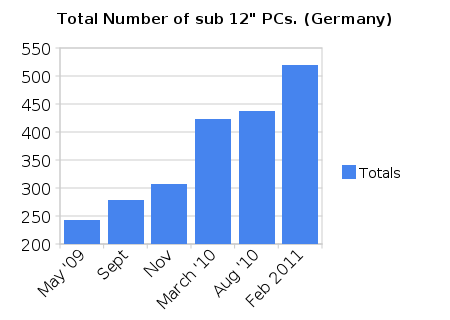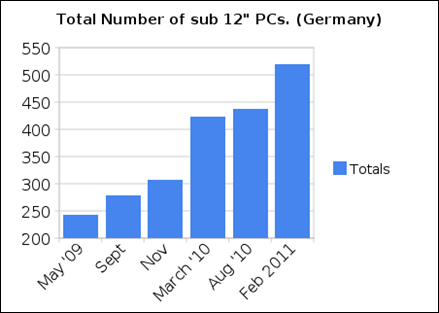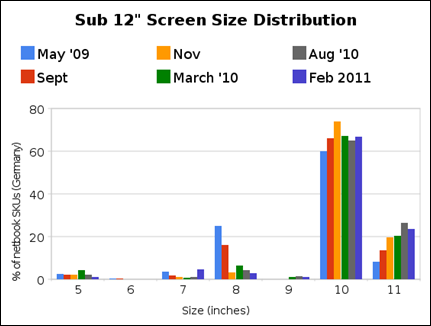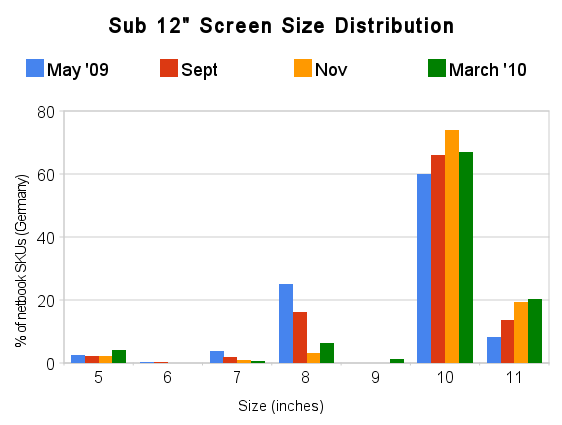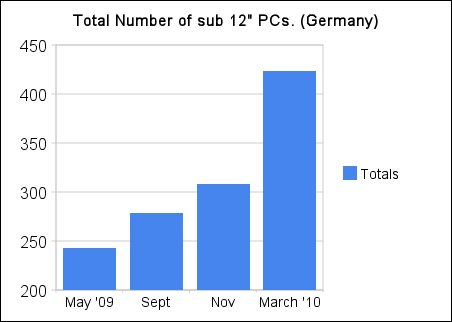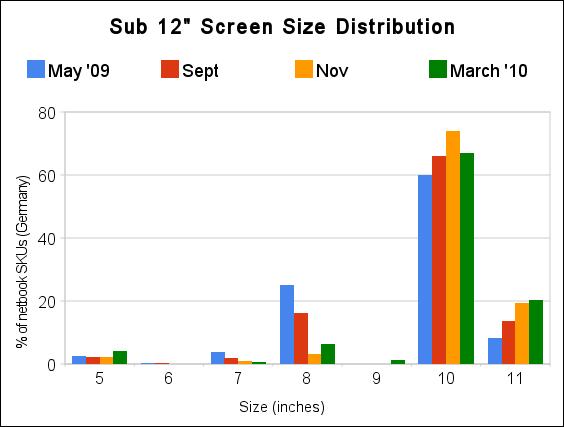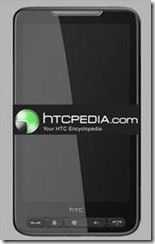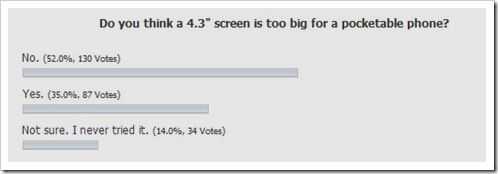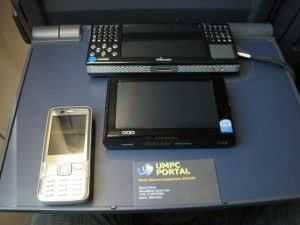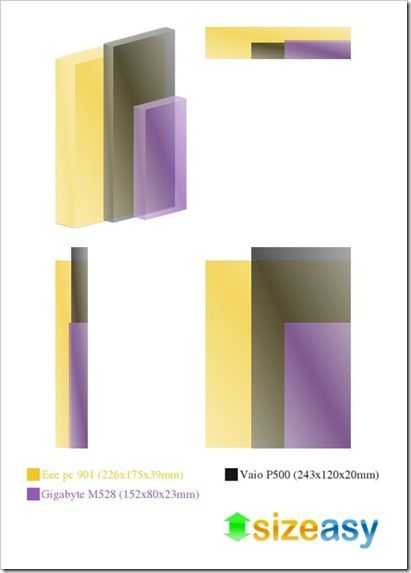I’m ready to consider an 11.6 or even a 12 inch screen now and its based on my requirement to run some more complex software on a device that has a higher resolution. The problem is, while I can bear a bigger footprint, I can’t bear much more weight.
My Gigabyte Touchnote with its Runcore SSD and 2GB upgrade has served me well for 2 years but with the extended battery I’m down to 4hrs so it really is time to think about something new. The Touchnote weighs 1.45KG in its current form and there’s no way I want to go above that; In fact I’m looking to get as close as I can to 1KG. I’m also looking to stay with ‘just enough’ CPU which keeps the price down and allows me to stay in the low-power, long-battery life bracket. For me though, ‘just enough’ means dual-core Atom N550/N570 or AMD C-50 and if I consider my video editing project, it could be higher than that.
As I look at devices like the ASUS EeePC 1015PN and the Samsung NC210 I see Windows Starter, 1GB and 1024×600 screens but weights below 1.25KG. There’s also the AMD C-50-based Toshiba NB550D and the EeePC 1015b which at 1.3KG offers 2GB and, we hope, Windows options. The Fujitsu Lifebook PH530 is an interesting 1.33KG option with Core i3 and an 11.5 inch screen but in the 12 inch range you really are looking at 1.5KG unless you are prepared to pay serious money.
With my Android tablet PC taking over some of my netbook work now (many of my shorter posts last week were done with the Galaxy Tab) I’m not worried about having 8hr battery life. A solid 4-5hrs is fine so perhaps that means I can go up with the CPU and down with the battery life.
I get the feeling that there are a lot of you out there that are in the same position. You’ve had your netbook for a year or two and you’re looking for another mobile productivity solution. So what’s your preference? Do you want to keep it small or light? Do you want to break out of the Intel netbook restrictions or are you happy to carry on inside their restrictions? Feel free to comment below and of course, if you have buying tips, lets hear them.


